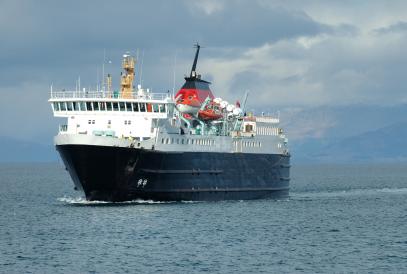Access and Mobility
Barcelona is one of the leading tourist destinations in Europe.
The city is accessible through these transport facilities:
Barcelona Airport, with two commercial terminals, T1 and T2, and a corporate terminal with capacity for 26 private planes, has a transit of more than 800 flights a day and more than 50 million passengers a year. The airport is 12 kilometers from the city and it is also accessible by train, bus and metro.

Barcelona is the most important cruise port in Europe and the fourth in the world. In 2016 the port received 2.7 million cruise passengers. Barcelona is the home port of the main cruise companies that sail through the Western Mediterranean. As for regular ferry lines connecting the Balearic Islands, Genoa, Civitavecchia (Rome), Algiers and Tangiers, the port of Barcelona received 1.27 million passengers. To accommodate this volume of passengers the port has seven terminals dedicated to cruises and three ferry terminals.

The France-Spain high-speed line, through the new Trans-Pyrenean tunnel of Pertús, connects Barcelona with several European cities. The journey between Barcelona and Paris takes place in 5h.35m. The high speed also connects the Catalan capital with Madrid and other cities of Spain.

Barcelona is located 150 km from La Jonquera, on the border with France. It is connected to the French motorway network via the AP7 and C33. The city can be reached using the highways rings or through the avenue Meridiana until the center. From the south, driving from the rest of Spain the city is connected through the AP2 motorway and the access is via Diagonal Avenue.

The city has a wide offer of public transportation with a renowned service:

Barcelona has 12 subway lines that cover a total of 144 kilometers through 180 stations and a funicular line. The metro runs daily between 05 and 24 hours and offers uninterrupted service on weekends. Metro line 9 connects the airport with the Fira de Barcelona Gran Via. To the Montjuïc enclosure is accessed by lines 1 and 3.

The TMB bus network, with 100 lines, has more than 1,060 vehicles, all adapted for people with reduced mobility. Some lines start to circulate at 4.25am and end at 11pm. Passes: TMB offers passes for congresses and special events. They are valid for 2, 3, 4 or 5 days and for all means of transport. Several night bus lines cover all major routes throughout the night.

The Tram system of Barcelona is an accessible, environmentally friendly, fast and comfortable means of transport. It has two lines: Diagonal- Baix Llobregat and Ciutadella Besòs, connecting the city with various metropolitan towns and has 56 stations.

There are more than 10,500 taxis in Barcelona and its metropolitan area, easily identifiable by their yellow and black appearance. The Fira Barcelona venues have taxi ranks laid out to facilitate the arrivals and departures of visitors.

The Ferrocarrils de la Generalitat railway lines, which date from the 19th century, operate in Barcelona as yet another part of the metro system, connecting the city to the neighbouring regions of Baix Llobregat, Anoia, Vallès Occidental and Bagès, with a frequent service that is integrated into the fare system.

The funicular railway has two stations: Paral·lel, which links with the metro lines L2 and L3, and Parc de Montjuïc, which links with the Montjuïc cable car. From the Montjuïc funicular station you can get to the viewpoints and green spaces, Montjuïc Castle, the Fundació Joan Miró and the Olympic Stadium amongst other landmarks.